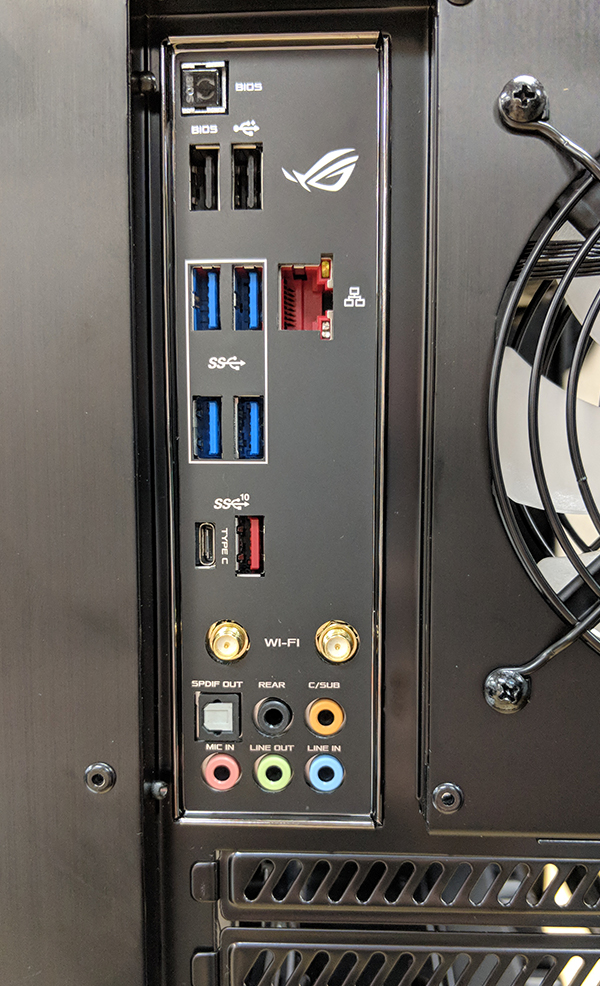How to Connect Peripherals to Your PC
There are a wide range of peripherals and accessories you can connect to your PC, and many different ways to connect them. The most common connection types may include USB 2.0, USB 3.0, USB 3.1, USB 3.1 Type C (Gen 1 & Gen 2), HDMI, DVI, DisplayPort, Mini DisplayPort, Ethernet (also called RJ45), S/PDIF (also called TOSLINK or Optical Audio), various 3.5mm audio jacks (speaker out, mic in, centerline subwoofer, channel left, channel right), and a combo PS/2 port. Some more specialized connections for server and workstation boards may include serial ports (also called DB9), S-Video, RCA audio (may come with some capture cards), VGA (also called DB15), and IPMI (looks identical to Ethernet but has a different function). If you are unsure what a connector may be, check the motherboard's manual.
Most accessories you connect will probably be via USB. Depending on your motherboard, there may be several different colored USB ports, which may be confusing at first. Here's a quick rundown of the different types of USB ports and how you should use them.
USB 2.0 ports are almost always black, and have been standard on PC's for more than a decade. Most motherboards come with at least 2 USB 2.0 ports, but there are some that do not come with any. It is generally a good idea to reserve these for your mouse and keyboard and leaving the other high speed USB ports for other things. Keyboards and mice do not really benefit from the higher speed, although some gaming keyboards may require 2 USB ports for increased power, so if you have one, bear that in mind.
USB 3.0 ports are almost always dark blue. USB 3.0 offers high speed data transfer (up to 5 Gbps) and provides more power to peripherals, and is generally backwards compatible with USB 2.0 accessories. Note: if an older peripheral is having issues, plugging it into a USB 2.0 port may resolve them.
USB 3.1 is where things start to get a little confusing. A standard USB 3.1 port is the same shape as a USB 2.0 and 3.0 port (this type of connection is called Type A) but is usually a teal color. Most boards only have 1 or 2 of these. USB 3.1 offers double the transfer speed of USB 3.0 (up to 10 Gbps) and can transfer even more power to peripherals. Again, it should be backwards compatible with older USB devices, but that is not guaranteed.
There is also another type of USB 3.1 connection, which is further subdivded into 2 categories. USB 3.1 Type C looks similar to an Apple Lightning connector and operates on the same principle of being able to plug in upside down or right side up. They are not interchangeable, however. USB 3.1 Type C comes in 2 variations, Gen 1 and Gen 2. Gen 1 is nearly identical to USB 3.0 in terms of speed, up to 5Gbps. There's nothing really special about Gen 1 other than the connection type. Gen 2 is where things get interesting. Gen 2 has the same transfer speed as regular USB 3.1, in addition to being able to support Thunderbolt 3 devices. Thunderbolt 3 can transfer data at a blistering 40Gbps. While there is no physical distinction between a Gen 1 and Gen 2 Type C port, if it's a Gen 2 port there will typically be a Thunderbolt logo above it. If you are not sure, check the motherboard's manual.
Depending on your configuration, your system will have a variety of video ports to choose from. If your system has a dedicated video card, make sure that you use those connections for your monitors rather than those on the board. If you need help setting up your monitors, please check our guide on how to do that.

